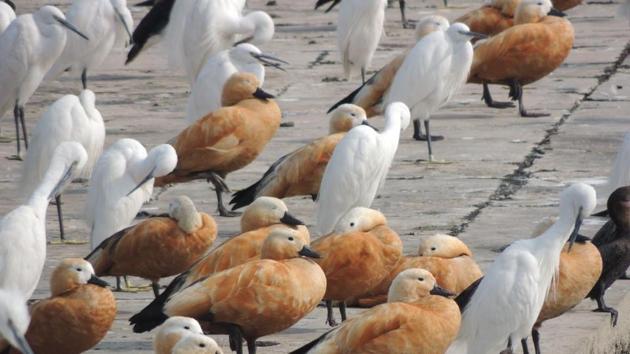Hotspot for migratory birds, Aslan wetland may get coveted recognition
Asan receives about 40 migratory species and about 10 of them, including Rudy Shelduck, Common coot, Gadwall, Kingfisher, Indian cormorant, Baer’s pochard, Northern pintail, Bar-headed goose, have already marked their presence.
DEHRADUN: As the winter chill creeps in slowly, migratory birds have started flocking at Asan Conservation Reserve, a wetland located in the outskirts of Dehradun. But, that’s not the only good news.

The site has been proposed for inclusion in the Central Asian Flyway (CAF) under the Convention on the Conservation of Migratory Species of Wild Animals (CMS) - of which India is a member. The CAF covers a large continental area of Eurasia between the Arctic and Indian Oceans and the associated island chains. The inclusion will help in securing the wetland and in conserving the route regularly used by migrating birds.
“About a fortnight ago, we had sent the proposal to the ministry of environment, forest and climate change (MoEFCC) proposing to include Asan as an important site of the flyway,” Dhananjai Mohan, additional principal chief conservator of forest (APCCF) wildlife and intelligence, told Hindustan Times.
The CAF held its meeting in August which saw the participation of states having wetlands. Initially, Uttarakhand didn’t attend the meeting. It submitted the proposal after the ministry sent a circular to all states seeking information about important wetlands coming under the flyway.
Asan receives about 40 migratory species and about 10 of them, including Rudy Shelduck, Common coot, Gadwall, Kingfisher, Indian cormorant, Baer’s pochard, Northern pintail, Bar-headed goose, have already marked their presence.
Spread over 4.44 sq km, the reserve becomes a hot-spot for bird lovers during this season. The flocks start arriving Asan in October and leave in March. Cormorant, heron and a few other species breed in the wetland during their stay.
“Belonging to the three families of duck, goose and swan, Rudy shelduck or Tadorna ferruginea originally resides in North West continents like Africa. They breed in Europe and Asia. The birds travel to Asian countries, including India and Pakistan, during winters. It is the first species to reach Asan with over 500 of them arriving every year,” ranger, Asan, Jawahar Singh Tomar said.
Several other species, including Red-crested pochard, Common pochard, Tufted duck, Eurasian wigeon, Crested grebe, Common goldeneye, Baer’s pochard, Marbled teal, White fronted goose, Stork billed kingfisher, White-tailed rubythroat, are likely to arrive by November. The Great cormorant, a seabird, is likely to be seen at Asan by the next month.




